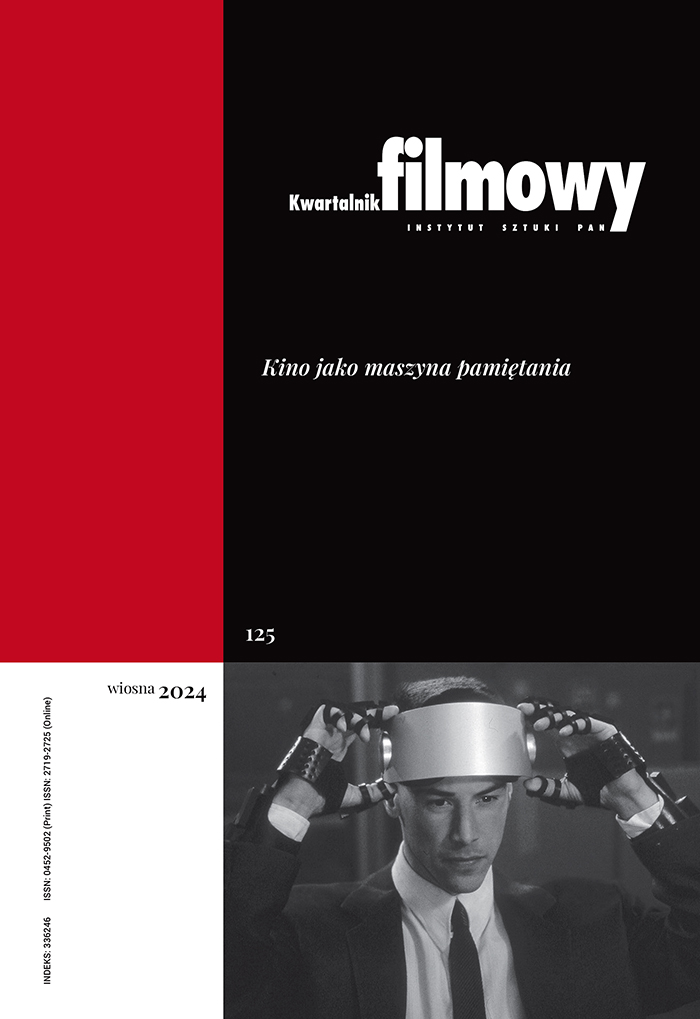Czyja jest Brytania. Lindsay Anderson i Derek Jarman, czyli zaślubiny buntu z konserwatyzmem
Abstrakt
Pojęcie brytyjskości w kulturze Wielkiej Brytanii to pojęcie ambiwalentne. Z jednej strony kojarzy się z wiktoriańskim czy też imperialnym ideałem Brytanii wielkiej, arystokratycznej i triumfującej, z drugiej zaś można je wiązać z buntowniczością, tak kluczową w brytyjskiej tradycji tej kultury. Autorka skupiając się na filmach Jeżeli… Lindsaya Andersona i The Last of England Dereka Jarmana analizuje stosunek ich twórców (dla których tożsamość narodowa zawsze była centralnym motywem twórczości) właśnie do pojęcia brytyjskości. Kosińska stara się udowodnić, że będąc zajadłymi krytykami sytuacji i stanu swego kraju, obaj reżyserzy są jednocześnie patriotami i tradycjonalistami, którzy tęsknią za utraconym rajem, brytyjską Arkadią. Krytykują więc nie tyle samą Brytanię czy jej tradycję, ale to, co z nią dzisiaj uczyniono. Mitowi oficjalnemu przeciwstawiają swoją wersję wspomnianej brytyjskości – ich Brytania jest otwarta dla wszystkich swych obywateli, wyzwolona z imperialnych ambicji i konsumpcyjnych pokus.
Słowa kluczowe:
Lindsay Anderson, Derek Jarman, kino brytyjskieBibliografia
Nie dotyczy / Not applicable
Google Scholar
Autorzy
Karolina Kosińskakwartalnik.filmowy@ispan.pl
Instytut Sztuki, Polska Akademia Nauk Polska
Absolwentka kulturoznawstwa (specjalność filmoznawcza) w Instytucie Sztuk Audiowizualnych Uniwersytetu Jagiellońskiego. Pracę magisterską dotyczącą form buntu w kinie brytyjskim obroniła pod kierunkiem prof. dr. hab. Tadeusza Lubelskiego w 2002 roku. Od 2003 roku redaktorka „Kwartalnika Filmowego”.
Statystyki
Abstract views: 741PDF downloads: 116
Licencja
Prawa autorskie (c) 2006 Karolina Kosińska

Utwór dostępny jest na licencji Creative Commons Uznanie autorstwa 4.0 Międzynarodowe.
Autor bądź autorka udziela wydawcy niewyłącznej i nieodpłatnej licencji (CC BY 4.0) na wykorzystanie tekstu w „Kwartalniku Filmowym”, zachowuje nieograniczone prawa autorskie i zobowiązuje się do podawania miejsca pierwodruku przy ponownym wykorzystaniu artykułu (umowa licencyjna do pobrania). Czasopismo jest wydawane na licencji CC BY 4.0. Zgłaszając artykuł do publikacji, autor bądź autorka wyraża zgodę na jego udostępnianie na tej licencji.
W wydaniach od 105-106 (2019) do 119 (2022) wszystkie artykuły były publikowane na licencji CC BY-NC-ND 4.0. W tym okresie autorzy i autorki udzielali(-ły) niewyłącznej i nieodpłatnej licencji (CC BY-ND 4.0) na wykorzystanie tekstu w „Kwartalniku Filmowym”, zachowywali(-ły) nieograniczone prawa autorskie i zobowiązywali(-ły) się do podawania miejsca pierwodruku przy ponownym wykorzystaniu artykułu.
Inne teksty tego samego autora
- Karolina Kosińska, Od redakcji , Kwartalnik Filmowy: Nr 109 (2020): Przestrzeń architektoniczna w filmie
- Karolina Kosińska, Od redakcji , Kwartalnik Filmowy: Nr 130 (2025): Nowa gatunkowość
- Karolina Kosińska, Od redakcji , Kwartalnik Filmowy: Nr 113 (2021): Film i technologia
- Karolina Kosińska, Od redakcji , Kwartalnik Filmowy: Nr 125 (2024): Kino jako maszyna pamiętania
- Karolina Kosińska, Od redakcji , Kwartalnik Filmowy: Nr 108 (2019): Produkcja i dystrybucja filmowa
- Karolina Kosińska, Od redakcji , Kwartalnik Filmowy: Nr 116 (2021): Kino i tożsamość społeczna
- Karolina Kosińska, Od redakcji , Kwartalnik Filmowy: Nr 111 (2020): Zmysły i afekty
- Karolina Kosińska, Od redakcji , Kwartalnik Filmowy: Nr 119 (2022): (Nowa) teoria filmu
- Karolina Kosińska, Od redakcji , Kwartalnik Filmowy: Nr 118 (2022): Jedno ujęcie
- Karolina Kosińska, Od redakcji , Kwartalnik Filmowy: Nr 115 (2021): Film formy, film treści











